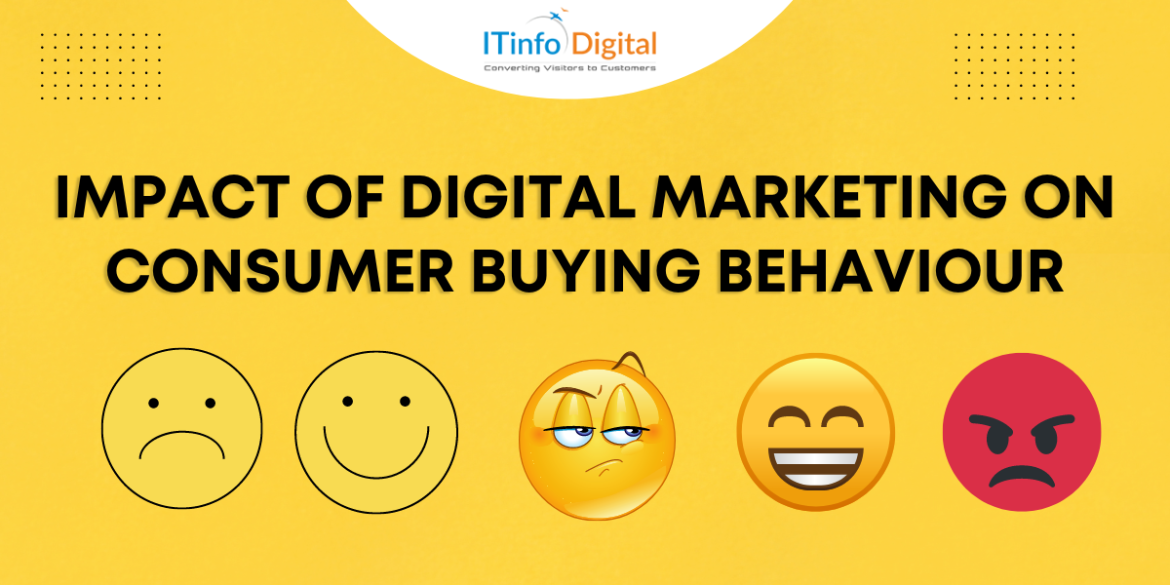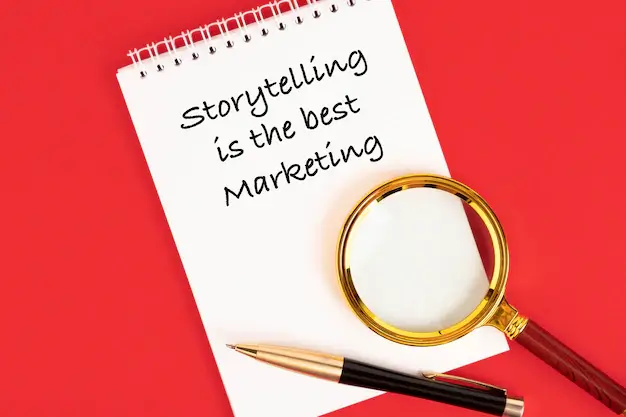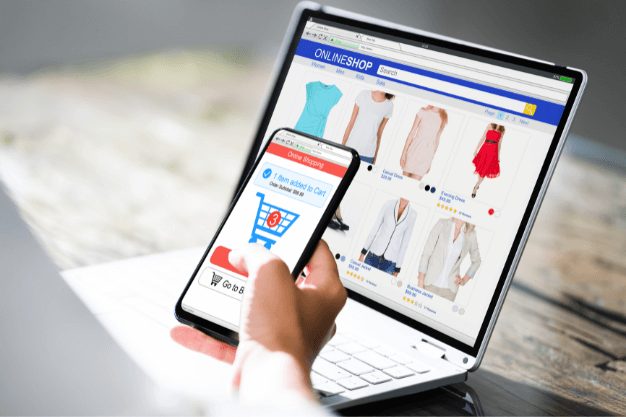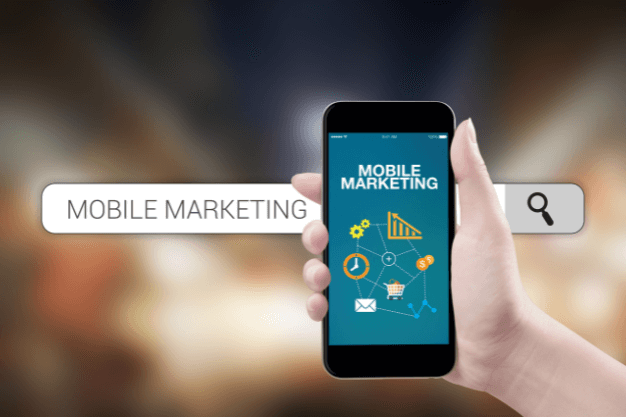The Covid-19 Pandemic augmented the use of Digital platforms in every domain. The impact of the lockdown has undoubtedly changed the behaviour pattern of consumers around the globe. Every mortal around the world lived in isolation which certainly affected buying behaviour. The transformation in the buying behaviour compelled traditional businesses to shift toward Digital Platforms.
What is Consumer Behavior?
It is a detailed analysis of consumers and an understanding of the behaviour pattern. Consumers are human beings, and decoding the likes & dislikes and emotional responses of this complex creature help in creating a better marketing strategy.
Analyzing consumer behavior facilitates a marketer in understanding what exactly influences the consumer’s decision to purchase a particular product. Studying consumer behaviour is always an advantage because it significantly impacts the consumer.
A detailed consumer analysis would clearly understand a consumer’s impression of a particular brand or product. Perhaps a sort of a crystal ball gazing into the psychology of the consumer.
Understanding what influences a person to choose a particular product is always an advantage. Several factors impact the behaviour of the consumer. It could be media, family, or friends.
A marketer would gauge consumer behavior and investigate the purchase pattern to understand the trend. The factors that would influence consumer behaviour are Psychological, Social, and Personal.
The Role of Digital Marketing in Changing Consumer Buying Behaviour:
Capacity to Research and Experiment
The online world is a puzzle of unlimited data, and the availability of information is making the consumer brighter. The Internet is no longer a luxury; everyone has access to smartphones. With plenty of data and internet connection, customers can make intelligent decisions, and the choices are plenty in the online world. There is unlimited content online with a plethora of brands. Indeed, consumers in today’s world are spoiled with choices. They can compare products and then make a decision.
Digital Marketing has removed the middle man, which has eventually helped build a bond between the brand and the consumer.
Storytelling
The world of narratives is quite fascinating. People love listening to stories rather than delving into complicated mathematical & scientific matters. Facts are indeed essential, but fiction attracts a crowd. In digital marketing, storytelling helps in transmitting information to the consumer in a profound manner.
Storytelling gives a human touch to the existing material world of finance and profit & loss. People need to get emotionally connected with the brand and product. Storytelling and a fictional tale help in creating this bond.
Word of Mouth
If storytelling increases the human touch, then word of mouth would indeed take the aspect of human touch to the next level. Gossips are ingrained in our psyche; people generally love listening to others and forming their opinions. Around 90% of customers trust their immediate friends and family members more than in advertisements. Therefore word of mouth is an integral part of digital marketing strategy, and it influences consumer buying behaviour.
What exactly is word of mouth in the digital marketing world?
It is the personal blogs, social media channels, online discussion forums, and other paid influencers.
The rise in E-Commerce and online stores
Imagine the good old days when you had to walk to the nearby grocery store to buy fresh fruits and vegetables. Today the Big basket app has changed the way you buy groceries. Consumers have started trusting the internet more than the nearby store. Most brands are online, making it easier to select and purchase. The rise in ECommerce and online stores have indeed transformed how people shop. The pandemic also increased online shopping. In fact, amidst the Covid-19 peak, people were staying indoors, leading to an increase in online shopping.
Personalized Shopping Experience
It is not just enough to identify a prospective customer. The critical aspect of digital marketing is to serve the prospective customer precisely what they prefer. This has led to a remarkable shift in purchasing a product of our choice. Digital marketing has undoubtedly given a Personalized Shopping Experience, and it has compelled brands to create a marketing strategy that would ensure a personalized experience for customers.
Online Advertising
Technology is growing at an exponential pace, and the internet is one single place where all the requirements of consumers are met. Unfortunately, many customers are busy with online activity and ignore various advertisements. Brands use online advertisement strategies and attract customers by providing attractive deals and discounts. Think about all the daily emails from Flipkart and Amazon to Zomato and Swiggy.
Brands are ubiquitous on social media platforms and third-party websites to promote deals and influence consumers. As a result, impulsive buyers are undoubtedly tempted to purchase. Today’s social media platforms have a number of features that aid in product promotion and advertising. Examples of personalized advertisements for consumers include Instagram Paid ads, Facebook ads, and YouTube ads. They are excellent platforms for promoting a certain item or service.
Mobile Focused Digital Marketing
A few decades ago, the Mobile phone was merely a communication device. Today it is everything that one could fathom. Life without an Android smartphone is impossible. It is akin to carrying a mini-computer in your pocket. Approximately 50% of web traffic comes from mobile. Various social media platforms on mobile devices are undoubtedly changing the consumer’s behaviour patterns.
Conclusion
So far, we have covered various ways Digital Marketing impacts consumers’ preferences. It would be an exciting tale for all the future geeks who would analyze the history of consumerism through the lens of Digital Marketing.
What Exactly is e-commerce?
Most people associate e-commerce with the online sale or purchase of physical goods. E-commerce, on the other hand, comprises the selling and purchase of non-physical things such as services & digital products. It occurs when a company offers products or services on the internet.
Some e-commerce retailers only sell online. For example, assume an entrepreneur establishes a business offering high-end pet items. Before the internet, they would have had two options: market their item via their boutique pet shop or sell it wholesale to national pet goods retailers. These entrepreneurs now have a third option: e-commerce. They can sell their items through their website, a third-party website, or both.
Sometimes the distinctions between e-commerce and conventional retail blur. For example, when a client compares prices on her smartphone while standing in a physical store examining its physical objects, it isn’t easy to categorize the experience as one or the other.
The various types of e-commerce models are as follows:
- Business to Consumer (B2C): Business to Consumer (B2C) e-commerce is the most common type of e-commerce. Business to consumer refers to a transaction between a company and a customer, such as when you buy a rug from an online store.
- Business to Business (B2B): Business to Business e-commerce is when one company sells a product or service to another company, such as a manufacturer, wholesaler, or retailer. Business-to-business e-commerce is not aimed towards consumers and typically involves things such as raw materials, software, or products that are integrated. Manufacturers can also sell to retailers directly through B2B eCommerce.
- Direct to Consumer (D2C): Direct to Consumer e-commerce is the newest paradigm of e-commerce, and trends in this area are constantly evolving. D2C refers to a brand selling directly to the end-user without the need of a retailer, distributor, or wholesaler. Subscriptions are the well-liked D2C commodity, and selling from Social media marketing platforms like Pinterest Marketing, Facebook Marketing, Instagram Marketing, Youtube Marketing, and others is popular for direct-to-consumer sales.
- Customer to Consumer (C2C): The sale of an item or service to another consumer is called C2C e-commerce. Platforms like Fiverr, Etsy, eBay, and others facilitate consumer-to-consumer transactions.
- Consumer to Business (C2B): When a person offers services or goods to a business entity, this is referred to as a consumer to business. C2B includes influencers that provide visibility, photographers, consultants, freelance writers, etc.
The Benefits of E-Commerce
- E-commerce allows vendors to access a worldwide audience. They remove the barrier of location (geography). Sellers and buyers might now meet in the virtual world without worrying about the constraints of geography.
- Electronic commerce will significantly reduce transaction costs. It reduces many of the fixed costs associated with managing brick-and-mortar stores. This enables the firms to have a considerably more significant profit margin.
- It makes sure that things are delivered fast and with minimal effort on the client’s side. Customer complaints are also handled expeditiously. It saves energy, effort, and time for both businesses and consumers.
- Another significant advantage is the convenience it provides. A client may shop 24 hours a day, seven days a week. The website is accessible at all times, whereas a store has a fixed set of hours for working.
- Electronic commerce also permits the client to communicate straight with the business and vice-versa without a mediator. This enables fast communication and transactions.
Disadvantages of E-Commerce
- The e-commerce portal’s start-up costs are pretty expensive. Installing hardware and software, staff training, and ongoing maintenance and upkeep are all costly.
- Although it may be a sure thing, the e-commerce sector is fraught with danger. Many businesses that rode the dot-com surge of the 2000s collapsed terribly. Even now, there is a significant possibility of failure.
- E-commerce might feel impersonal at times. As a result, it lacks the warmth of a personal relationship, which is essential for many companies and goods. This absence of a human touch may be detrimental to services and interests, such as interior design or the jewelry industry.
- Another source of worry is security. We have lately observed several security incidents in which client information was taken. Customers continue to be concerned about credit card fraud, identity theft, and other issues.
- There are also fulfillment issues. Even after the order has been placed, there may be issues with the shipment, delivery, mix-ups, etc. Customers are disgruntled and disappointed as a result of this.
Conclusion
Growing on the internet and building a successful business in this competing world is a tough job. So, it would help if you had a partner and a way through which you could grow quickly. ITInfo Digital is where you can turn your dream to be accurate. Here we can help you by giving you the best advertising techniques for your eCommerce websites. We help you increase the leads and sales; we help you differentiate your brand from others and optimize your market cost. This is the best agency for your eCommerce website.










